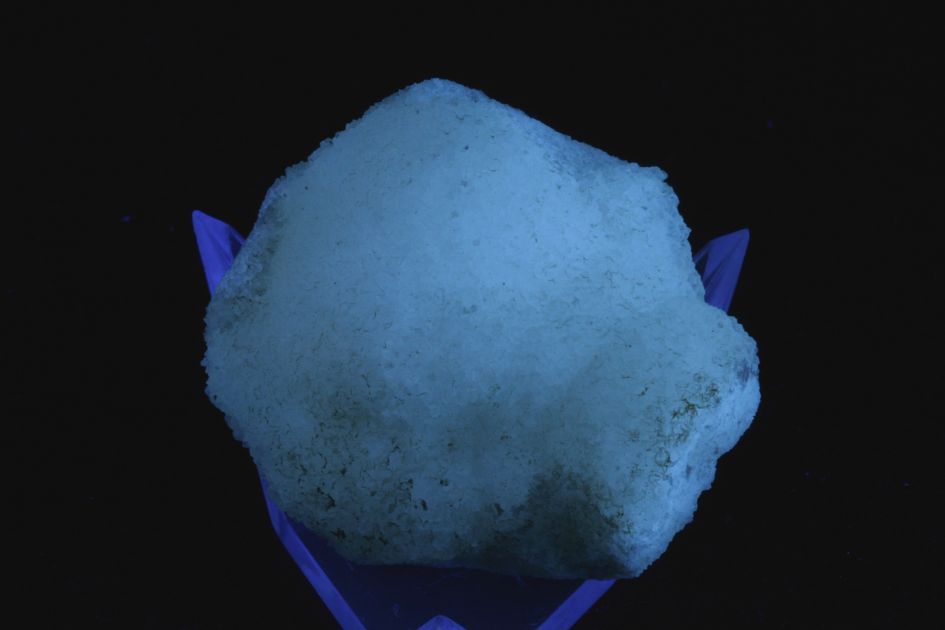Midrange UV
Calcite:
Leiping Mine, Leiping, Guiyang Co., Chenzhou Prefecture, Hunan Province, China.
Typical red fluorescence under all UV wavelengths but best under UV of around 320 nm. This is indicative of activation by manganese and lead, but with a lead concentration of less than ideal. Fluorescence of manganese under Longwave UV indicates clustering of Mn2+ atoms. Clustering means that the manganese ions are not spread evenly through the crystal lattice but that they grouping together in "islets". In those "islets" of manganese carbonate, manganese and oxygen have a slightly different interatomic distance than in calcium carbonate with neatly dispersed manganese ions. At the outer surface of these islets, yet more disruption of the interatomic distances of Mn-O occurs, causing manganese to need much less energy to fluoresce. There is also no co-activator needed to translate short-wave UV to longer wavelengths. We can consider these clusters as activator of this fluorescence mechanism.


Calcite: Kahuku, O'ahu, HawaII, U.S.A.
Bluish white fluorescence under all UV wavelengths. Caused by humic acids that were included during the formation of this calcite. There are not many minerals found on Hawaii because of the exclusively volcanic origin of the archipelago. About 135 species are listed on Mindat. This specimen was a present of Kitty and Bill Heacox.
Short wave UV
Calcite: Brunita quarry, La Peraleja, Sierra Minera de Cartagena-La Unión, La Unión, Murcia, Spain
Red fluorescence, strong in Longwave UV. Probably by clustering of manganese ions and the classic manganese lead activator. The matrix consists of weathered limestone, the so-called "caliche". The light brown fluorescence of this caliche is also due to manganese.
Long wave UV
Calcite on scolecite: Basalt quarry, Junnar, Pune District, Maharashtra, India
The pale blue-green fluorescence is a result of the presence of organic material. Mainly humic acids are transported by groundwater and end up in minerals “in the making”.
Calcite: Boverie quarry, Jemelle, Rochefort, Namur Province, Belgium
Red fluorescence, only in short-wave UV. The classic manganese and lead activator. The scepter growth of the crystals gives a special effect to this specimen..
Calcite (red) with aragonite (white) and sphaleriet (orange): Passa Passa Limani Cove slag locality, site of Limani area, Lavrion District, Attikí, Greece Prefecture. See spectrum for details.
Long wave UV
Short wave UV
Short wave UV

Halogen light and 405 nm laser light resp.
Calcite:
Gralex Quarry, Mont-sur-Marchienne, Charleroi, Hainout Province, Belgium
This specimen has deep grooves that follow the crystal growth patterns. Inside these grooves is an unknown substance that is highly fluorescent. This type of specimens is only marginally darker than what is normally found in this quarry. I have no idea why it is dubbed "black calcite".
Click on the photo
Calcite: La Lesse Quarry, Resteigne, Tellin, Luxembourg Province, Belgium
A calcite crystal of about 8 mm high fluoresces light pink because of manganese and a little lead. Manganite and galenite are present in this quarry, explaining the origin of the activators of this fluorescence.
Short wave UV
